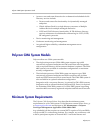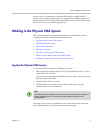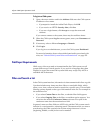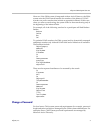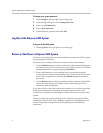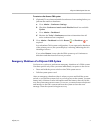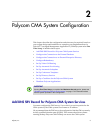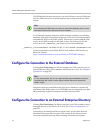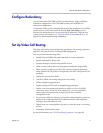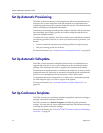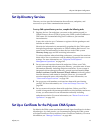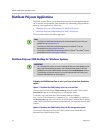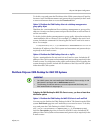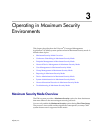
Polycom CMA System Operations Guide
10 Polycom, Inc.
The DNS should also have entries for your Active Directory server (if different
from the DNS) and for the external database server being used by the CMA
system.
To dynamically manage endpoints (which includes automatic provisioning,
automatic softupdate, and presence) right out-of-the-box, they must be able to
automatically discover the CMA system. This means you must add the DNS
service record (SRV record) for the CMA system. The lookup key for this
service record is
_cmaconfig._tcp
. So the record will resemble this:
__cmaconfig._tcp.customerdomain.com 86400 IN SRV 0 0 443 cma5000.customerdomain.com
For more information about DNS, DNS records, and how DNS works, see
Microsoft Technet
(http://technet.microsoft.com/en-us/library/cc772774(WS.10).aspx).
Configure the Connection to the External Database
If during First Time Setup you did not configure the CMA system to use an
external Microsoft SQL Server database, but need to do so now, see “Database
Operations” on page 427.
Integration with an external Microsoft SQL Server database is required for
redundant CMA 5000 systems or for CMA 5000 systems supporting more than
400 concurrently registered endpoints and 240 concurrent calls.
Configure the Connection to an External Enterprise Directory
If during First Time Setup you did not configure your CMA system to use an
enterprise directory, but need to do so now, see “Directory Operations” on
page 355.
Connecting to an enterprise directory allows users to enter their network
usernames and password to log into CMA system. It also allows users to
access the enterprise directory when selecting conference participants.
Note
If you configure the DNS server to use two or more Active Directory servers, make
sure that the servers have the same services available.
Note
It is not recommended, but you can create the CMA system databases manually
using Microsoft SQL scripts. Contact Polycom Global Services to request the
creation scripts.



